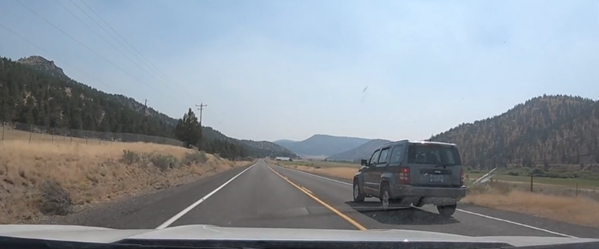Lesson Two: Passing (7.2)
Passing is going around another moving vehicle which is traveling in the same lane and direction. This is a high risk maneuver. You must decide if you need to pass and where it can be legally and safely performed.
Some two lane roads offer passing lanes to decrease the risk of passing vehicles.
Time and Space Needs
You need a legal location, available time, and lots of open space to complete a pass. When your speed is 60mph, it takes 24 seconds to pass a 90-foot-long semi truck that is moving 50mph. That’s a total of 2160 feet or 7 football field lengths! When an approaching vehicle is present, the space requirements double. The total clear distance you need to pass becomes 4320 feet- almost a full mile!
 Passing
Passing

To initiate a passing maneuver when legal and space requirements are met:
- Position your vehicle in lane position 2
- Decrease your following distance to 3 seconds
- MSMOG
- Enter into the adjacent lane to the left
- Accelerate to passing speed
- Overtake the vehicle
- See both of the passed vehicle’s headlights in the inside rearview mirror
- MSMOG
- Return to your lane
- Check rear area
It is unlawful to exceed the speed limit while performing a passing maneuver.
How does passing increase your risk as a driver?

To minimize your risk while being passed, be aware of the passing vehicle and the space they intend to occupy. You may need to make adjustments to your speed and/or lane position to aid in the success of the passing vehicle. Only make speed or lane position changes, if needed. Once passed, reestablish your following distance.
Flashing your lights in an attempt to force a vehicle to change lanes or to advise them that there is space to move back to a lane is a violation of law.
Essential Questions
-
What are some indicators that a passing maneuver is legal?
-
Explain where, why, and how to pass.
The acronym used for any lateral movements: M-Mirror, S- Signal, M- Mirror, O- Over the Shoulder, G- Go